Table of Contents
Imagine peacefully scrolling through an online article. Suddenly, a pop-up message appears – ‘Subscribe if you want to read more’. Sounds familiar? This is one among the many examples of a subscription business model. Made famous in the 1600s by newspapers and publishers, subscriptions are also popular in the world of WooCommerce.
Anything from groceries to grooming essentials and pet food can be sold in a subscription model. Even the most popular companies out there implement this model. Most of us know about Amazon’s Subscribe and Save option and Spotify’s timely ads asking to subscribe for a better listening experience.
So, what exactly is a subscription model, why are companies choosing it, and how can this be implemented in a WooCommerce store? That’s what we will be finding out in this blog.
What is a subscription business?
The subscription business model is a recurring revenue model where a customer pays for a particular service weekly, monthly, or yearly in return for a recurring delivery of products. These subscriptions can be renewed once their time period expires. During the entire duration of the subscription, the customer is guaranteed a frequent delivery of products without making repeated orders.
The reason why this is becoming more and more commonplace these days is because of its numerous perks for both the customer and the store owner.
Benefits of subscription business
The subscription business model offers numerous benefits, which is why it is implemented even by e-commerce giants like Amazon. Let’s look at a few of them.
Predictable and recurring revenue
A subscription model is not a one-off engagement with the customers. They sign up to receive your products periodically, which means there is an assured inflow of revenue for the store. If you strike the right chord with the customers, this is a business model that can guarantee a steady inflow of revenue.
Easy inventory management
When you switch to a subscription model, you periodically make a doorstep delivery of products for a stipulated time previously agreed upon. This makes inventory management easy and more predictable because you have a prior idea about what to deliver.
Better customer relationship
The subscription model opens a doorway for you to reach out to your customers frequently. Every delivery you make is a touchpoint, which, if used wisely, can reap benefits. You can engage in email marketing to cross-sell and upsell products and share exciting offers through emails. This will increase brand awareness among your customers and improve customer retention.
Cost-effective marketing
Once you earn the trust of existing customers through best practices, they will popularise your brand through word-of-mouth publicity. This is a highly effective strategy because people generally trust referrals from friends and family. It will help you cut down your marketing costs as well.
Types Of Subscriptions That WooCommerce Stores Can Adopt
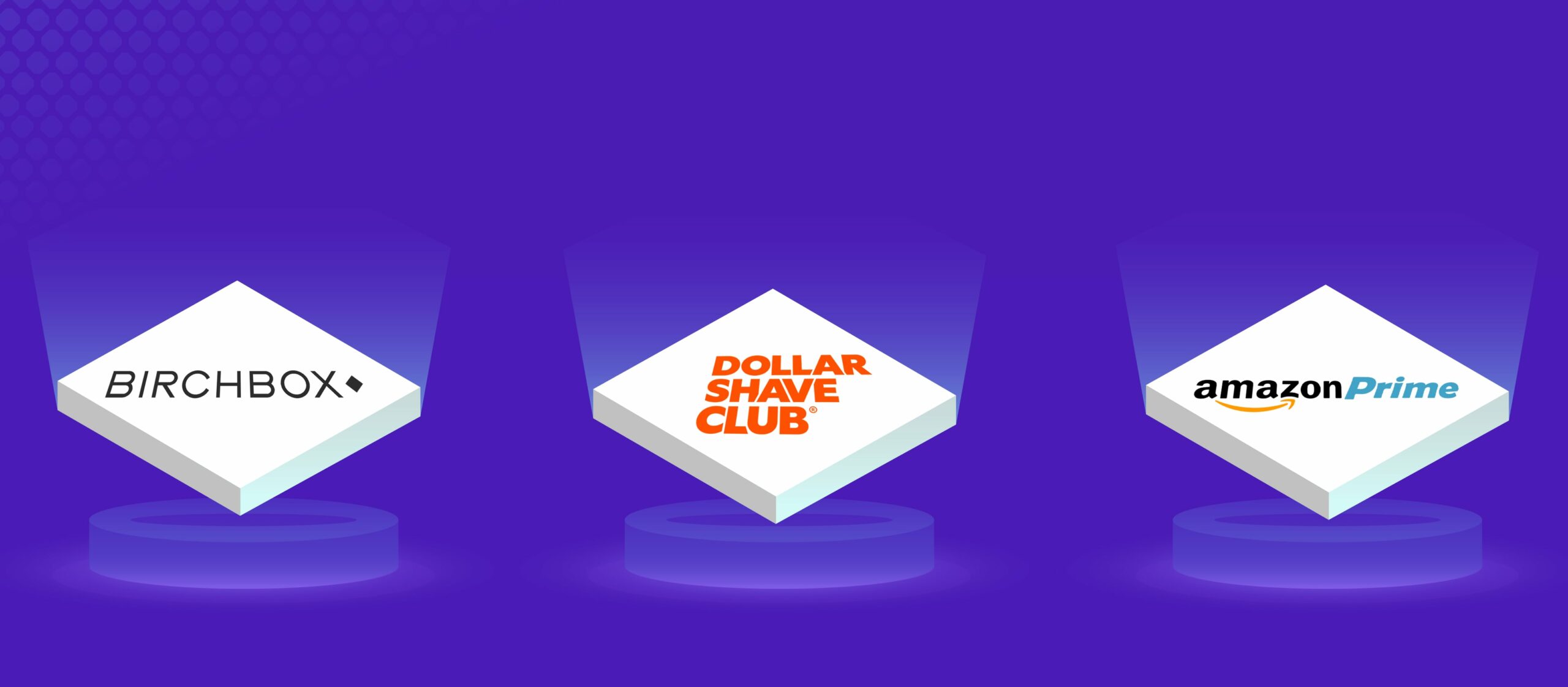
Lots of online stores are already tapping into this lucrative business model. Now, let’s look at some subscription models that WooCommerce owners can adopt.
Replenishment – Subscribe and relax
The customers are assured a promised delivery of regularly used products at their doorstep with zero hassles. They no longer have to repeat the mundane task of ordering the same items or worry about their favorite products going out of stock. Dollar Shave Club is a well-known example of a replenishment-based subscription model that periodically delivers grooming essentials to its customers.
Curation – a touch of surprise
In a curation model, customers periodically receive curated boxes. The customers are often clueless about the contents of the box. It could be an assortment of the latest products or a list of personalized items. This gives the store owner a lot of leeway in what to include in each of their deliveries. BirchBox is a leading beauty brand that sends boxes of curated beauty products to subscribers.
Membership model – It’s all about the perks
In a membership model, members enjoy perks that are inaccessible to regular customers. Many e-commerce stores utilize this to provide their members exclusive and early access to products, special offers, and deals. Amazon Prime is a well-known example of a membership-based model that gives exclusive discounts and deals for members. If juicy perks are offered at a reasonable rate, it will persuade even regular shoppers to become subscribers.
Pay as you go – Convenience meets Flexibility
In this model, you pay only for what you use. Unlike subscription services that compulsorily charge you a certain amount periodically for unlimited access to their services, this model lets customers decide the terms. Customers can pause a subscription if they are not using it for a certain period. This is much more economical for the customers and allows them to jump back in when they want to. E-commerce stores do not generally use this model. However, if applied to replenishment subscriptions, it can allow customers to stop a particular subscription if they are out of town or decide to use different products.
Setting up subscriptions in WooCommerce
WooCommerce does not come with a built-in feature to implement a subscription model. But there is always a plugin that saves the day. To enable subscriptions in your store, WooCommerce has a plugin called ‘WooCommerce Subscriptions’. Once you add this plugin, an option ‘Subscriptions’ appears on your Dashboard.
Adding a subscription product
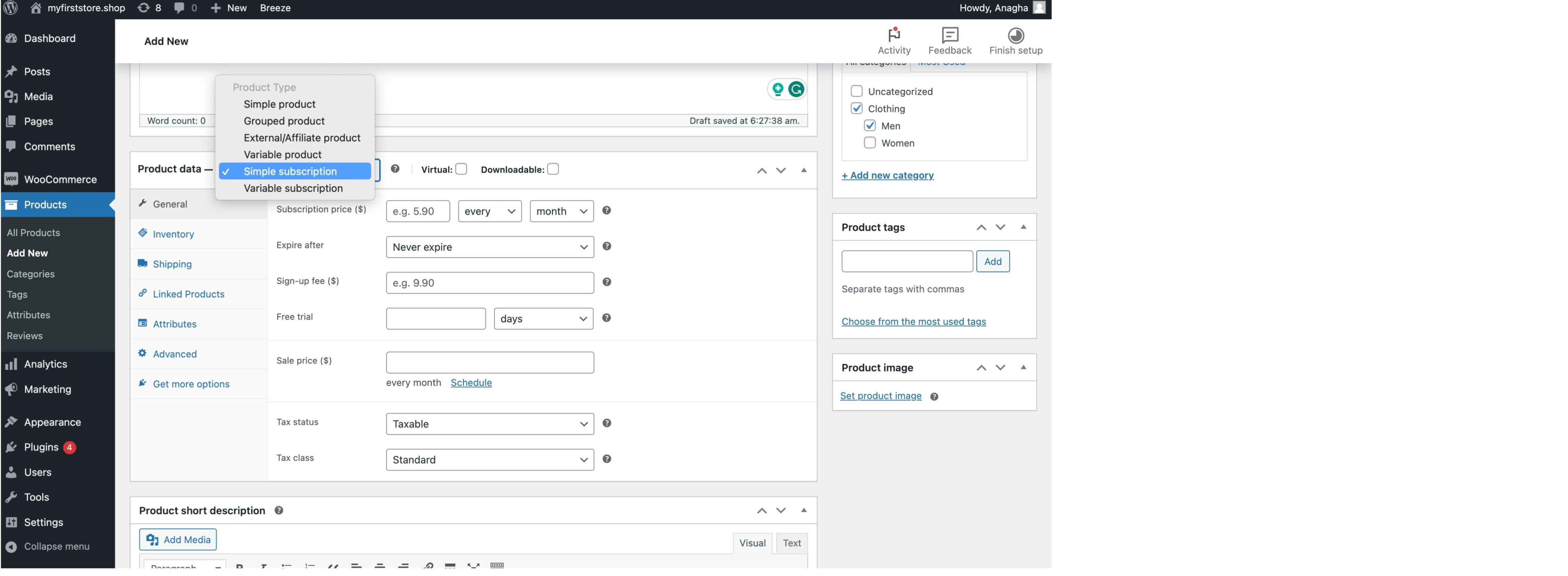
Just like how you add a simple and a variable product to WooCommerce, installing the plugin enables you to add a simple and variable subscription product. This can be done in the Products section of your dashboard.
Terms of subscription
After adding the subscription product, you can set the price, duration, and other aspects.
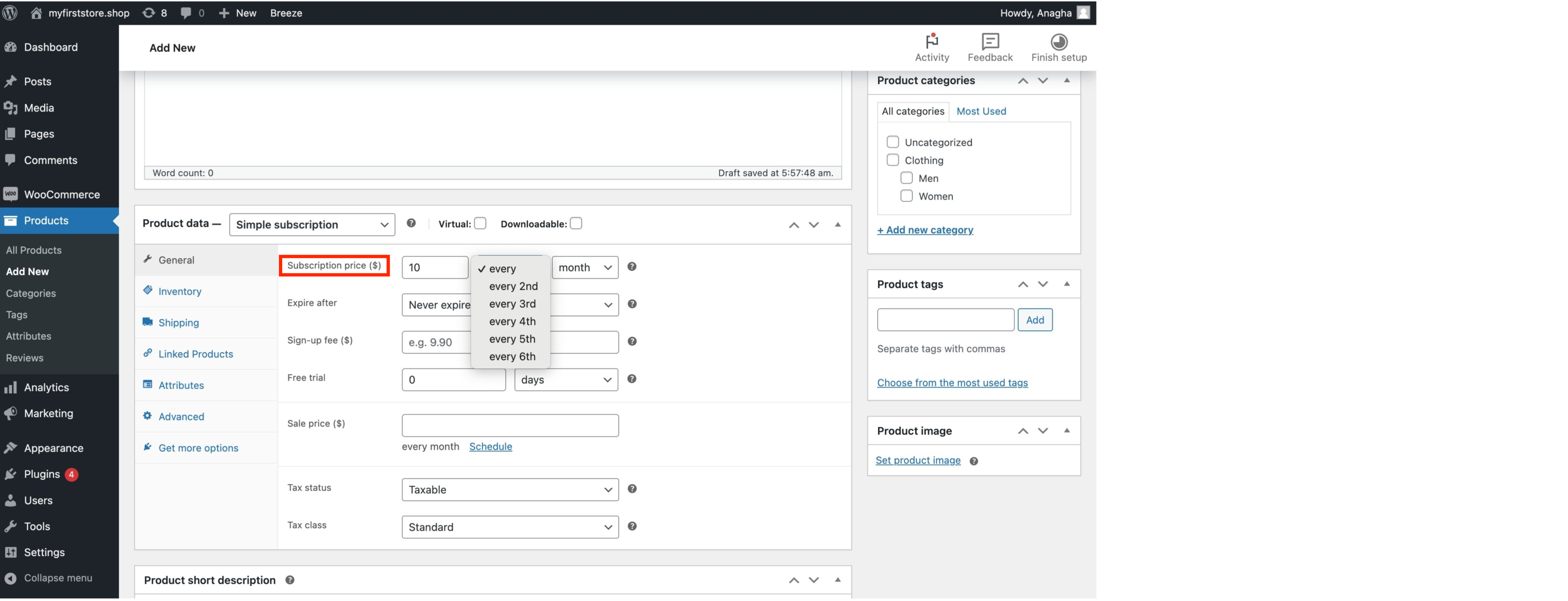
‘Subscription Price’ is where you enter how much you want to charge for a subscription and how often you plan to charge the customers. It can be yearly, monthly or weekly.
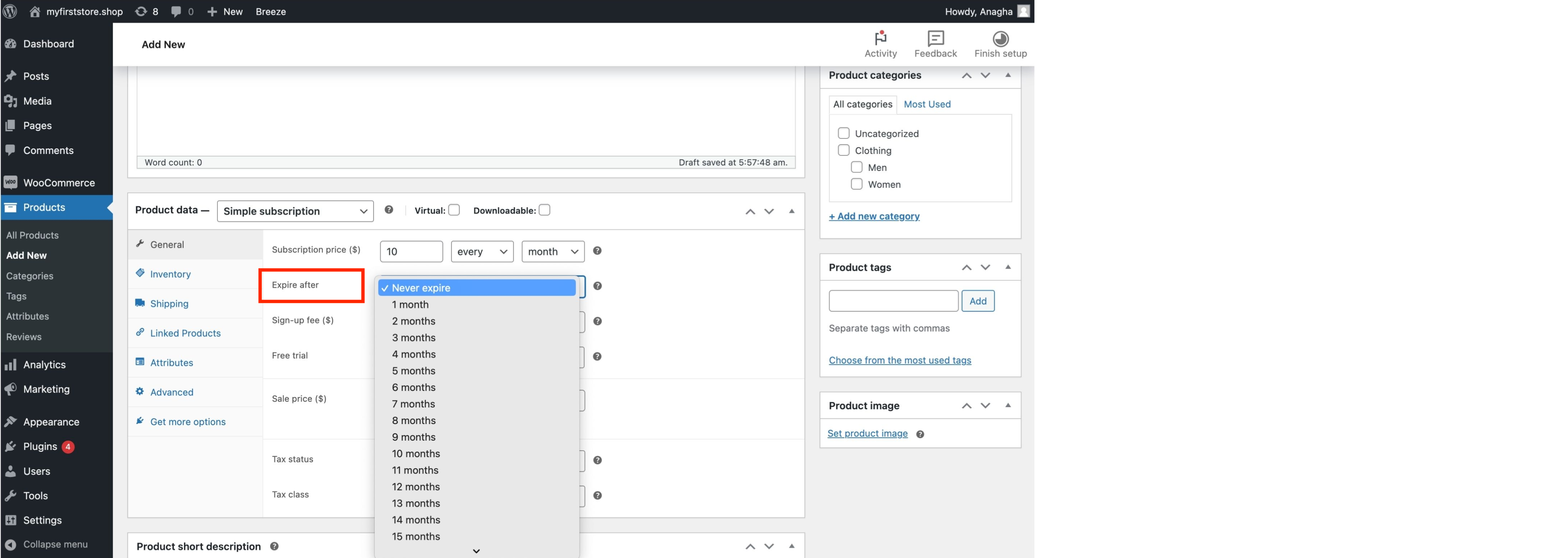
‘Expire after’ is where you enter the duration of the subscription. The plan will automatically expire once the specified duration is over.
Free trial and sign-up fee
You can charge a sign-up fee for your subscription and also provide a free trial for a certain period. If you plan to offer a free trial, the subscription fee will be charged only after the trial period. If you include a sign-up fee, it will be added to the total subscription fee.
For example, if your subscription fee is $10/month and your sign-up fee is $5, the customer has to pay $15 for the first month. If you provide a one-month free trial, customers will only be charged starting from the second month.
Some payment gateways do not accept subscription models that don’t charge any fees initially. So keep that in mind before you decide the terms of your subscription.
Limiting subscriptions

There is also an option to limit the number of subscriptions available for a customer. This ensures that a customer does not subscribe to the same product more than once and applies for a free trial (if any) repeatedly.
WooCommerce also lets you add a variable subscription product, in which you can offer subscriptions for different product variations.
Managing Subscriptions in WooCommerce
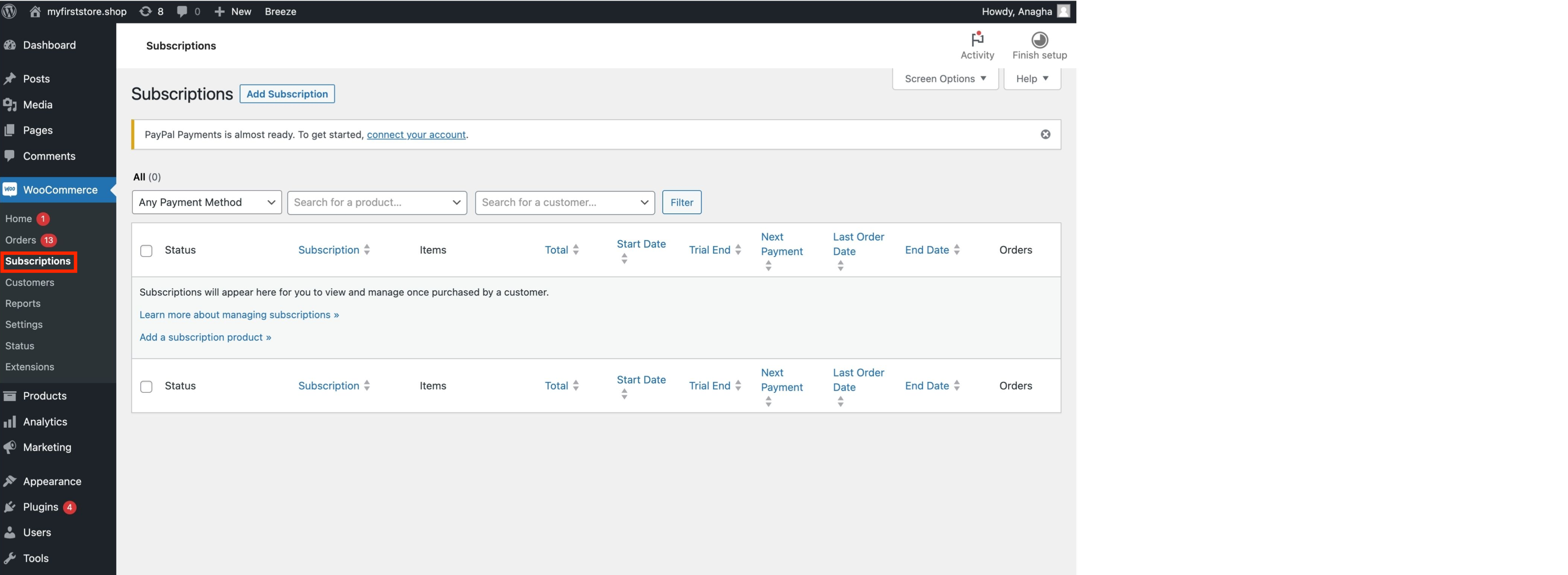
You can manage all your subscriptions from WooCommerce -> Subscriptions.
This is where all your active subscriptions will be listed. You will find options to suspend a subscription, reactivate a suspended subscription, or permanently cancel a subscription.
Subscription Payments available in WooCommerce

WooCommerce has multiple plugins like WooPayments, WooCommerce PayPal Payments, Amazon Pay, Stripe, and GoCardless that support manual and automatic payments.
The same applies to the renewal of subscriptions. The method of renewal chosen at the time of purchase continues to be used throughout the entire duration.
The Key metrics for a subscription business
The key metrics in a subscription model are quite different from a traditional model. It’s essential to track them to make sure your subscription model is working as expected. Let’s look at some of the key metrics that will help track the success of a subscription business model.
Monthly recurring revenue (MRR)
This indicates the revenue a particular business obtains monthly from its active subscriptions.
You can calculate MRR by multiplying the number of customers by their monthly subscription rate. Measuring MRR gives valuable insights into future revenue and growth trends. A dip in MRR indicates that your business is losing customers.
Annual Recurring Revenue (ARR)
ARR indicates the money that comes into a subscription business every year. This provides a long-term measure of revenue growth and helps in forecasting your revenue. If the term of a subscription is less than one year, it is not possible to assess ARR, and MRR is used instead.
Churn rate
This indicates the percentage of customers who terminate their subscription in a given period. Churn rate = (Number of canceled subscriptions in a given period / Total number of subscriptions) x 100. If your churn rate is high, it indicates that customers are leaving, and you should take correctional measures.
Renewal rate
Percentage of customers who renew their subscriptions in a given period. A higher renewal rate might indicate that your company might generate long-term revenue. To calculate the renewal rate, you should divide the number of renewed subscriptions by the number of subscriptions due for renewal.
Customer Lifetime Value (CLV)
CLV refers to the overall revenue obtained from a customer during the entire lifetime of their subscription. This value should ideally be higher than the Customer Acquisition Cost.
Customer Retention Cost (CRC)
This refers to the average amount of money spent to retain an existing customer. This includes customer support, loyalty programs, and other initiatives. This helps you to assess how effective your efforts and initiatives have been.
Trial Conversion Rate
This is applicable if you offer a free trial for your subscription service. In such a scenario, the trial conversion rate indicates the number of customers who converted to paid users.
Trial conversion rate = Number of trial-to-paid users divided / number of trial users.
Challenges of a subscription business
Minimizing churn
To minimize churn, constantly improving your products to meet the changing needs and expectations of customers is important. Segmenting your customers and providing them with personalized experiences is a strategy that can prove helpful. You can also delight your customers once in a while by offering them unexpected gifts and exclusive deals. Always make sure customers obtain value for what they are paying.
Pricing strategy
Picking the perfect pricing for your subscription model can be tricky. If the price is too high, you may fail to attract customers, but if it is too low, you may not generate enough profit. So, it is essential to address both revenue and customer satisfaction. You can try an A/B test to understand your customers and choose a pricing strategy that works best for you and your customers.
Scalability
When the subscription volume increases, and customer demands become more complex, scaling up your business to handle the increased transactions can become difficult. For instance, when users change their subscription plans, you might accidentally undercharge them. This can lead to revenue leakage. In such a scenario, you can use automation and cloud-based solutions to manage your customer data effectively.
Time to wrap up
The current trends indicate that more people are shifting from the traditional business revenue model to the subscription model. The fact that this model is implemented by even the big names in e-commerce is a clear indicator that its popularity in the world of e-commerce will not diminish soon. By closely monitoring the key metrics and chiseling your pricing strategy, it is possible to implement a subscription model effectively.










 THANK YOU!
THANK YOU!